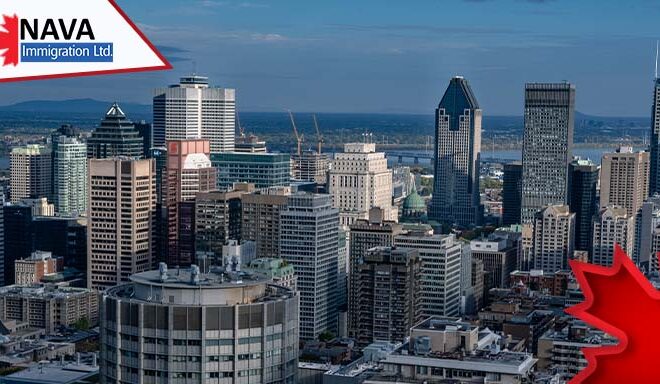Taxes in Canada: Assessing Highest & Lowest Provincial Rates
In Canada, taxation plays a crucial influence when managing your expenses, especially for individuals making a living. Taxes in Canada, with their different rates, have a direct impact on how much money individuals keep after taxes, as well as their ability to save, spend, and plan for the future.
Taxes are essential to Canadian society as well as the well-being of its citizens because Canada has a well-developed welfare system and socially accessible public programs.
Assessing the highest and lowest provincial tax rates can help you understand taxation across Canada. Also, determining the lowest taxation provinces can help you make an informed province choice and save additional costs when immigrating to Canada.
Understanding Types of Taxes in Canada
In Canada, there are various types of taxes that individuals have to pay to the government. Among them, the two most common types of taxes are as follows:
- Income Tax- It is further divided into Federal and Provincial Income Taxes.
- Consumption Tax- It is further divided into Generalised and Provincial Sales Taxes.
But it’s essential to keep in mind that there are an additional number of tax types that may apply to you.
Let’s find out what these two types of taxes mean.
Income Taxes in Canada
Income taxes in Canada are assessed in two ways, i.e., the Federal and Provincial Income Taxes.
- The federal income tax: It applies to all Canadian residents across all provinces as well as territories.
- The Provincial income tax: It differs province-wise in Canada.
Individuals in Canada will be required to pay both of these income taxes. Typically, Canadian tax rates are arranged into brackets.
The most prevalent misconception concerning income tax is that as an individual’s income rises or moves up through tax brackets, it also increases the flat rate at which an individual’s entire income is taxed. But this is not so. Rather, income is taxed on a tiered basis across various brackets.
For instance, on an income of $53,359 CAD or less, the tax rate in 2023 was 15 %. Also, on an income between $53,359 and $106,717 CAD, the tax rate was 20.5%.
In Canada, suppose your annual income is $90,000 CAD. So, rather than considering the relevant federal tax rate for your bracket (20.5%), you would rather pay the applicable tax on the amount that falls in the lower bracket, i.e., 15% on the first $53,359 CAD, before paying the corresponding tax rate,(20.5%) on amounts more than the bracket limit.
This simply implies that rather than paying $18,950 in income tax at a 20.5% flat rate, you have to pay $15,515 in annual income tax.
To better understand the taxes in Canada and determine the highest and lowest provincial rates across the nation, let’s assess an example.
As per the Statistics Canada report, in 2021, the average nationwide employment income of a worker in Canada was $51,600 CAD. This was the last available Canadian income survey. Let’s consider it as a pre-tax income. In 2023, the federal tax rate for this salary is 15%.
Province-wise income tax in Canada.
So, here’s a list of Canadian provinces showing how much money an individual with a $51,600 CAD salary would pay in taxes in each province. The provinces are arranged in ascending order, i.e., the region with the lowest to highest income tax rate:
- Nunavut: $6,727 CAD
- Ontario: $7,449 CAD
- Northwest Territories: $7,502 CAD
- British Columbia: $7,515 CAD
- Nova Scotia: $7,515 CAD
- Yukon: $7,704 CAD
- Alberta: $8,399 CAD
- Saskatchewan: $8,296 CAD
- Manitoba: $9,564 CAD
- Newfoundland and Labrador: $9,487 CAD
- Quebec: $9,331 CAD
- New Brunswick: $9,173 CAD
- Prince Edward Island: $9,909 CAD
So, Nunavut has the lowest income tax rate, and Prince Edward Island (PEI) has the highest income tax rate. However, it’s notable that this is not constant and may differ greatly depending on an individual’s income and expenditure.
Additional details concerning tax rates in each province are available on the government’s website.
Consumption Tax in Canada
Similar to income taxes, the consumption tax is also of two kinds, i.e., the General Sales Tax (GST) and Provincial Sales Tax (PST).
The General Sales Tax (GST: It is the national consumption tax imposed by the federal government of Canada.
The Provincial Sales Tax (PST): It is a provincial consumption tax that is imposed by each Canadian province and varies from region to region.
Notably, all Canadian residents are obliged to pay both types of taxes on goods and/or services purchased in Canada. It should be noted that certain items and services are excluded from these taxes.
Also, note that some provinces in Canada also integrate the GST with their regional PST, which is known as Harmonised Sales Tax (HST).
Although HST operates in the same manner as paying GST and PST individually, it’s much easier for record purposes, i.e., accounting and administrative tasks.
In Canada, the nationwide GST in 2023 is 5%.
The following are the provinces that impose both consumption tax rates. The 2023 PST rates are as follows:
- Saskatchewan: 6%;
- British Columbia: 7%;
- Manitoba: 7%; and
- Quebec: 9.975%.
The following are the provinces that impose combined consumption taxes; the HSTs are as follows:
- Ontario: 13%;
- New Brunswick: 15%;
- Newfoundland and Labrador: 15%;
- Nova Scotia: 15%; and
- Prince Edward Island: 15%.
The following Canadian provinces and territories do not charge a PST. These only charge GST on goods and services:
- Alberta;
- Northwest Territories;
- Nunavut; and
- Yukon.
So, this was an overview of Taxes in Canada. Nunavut has the lowest tax rate in Canada compared to the rest of the provinces and territories across Canada. So, choose a province wisely where you can easily manage your expenses and plan your savings.





